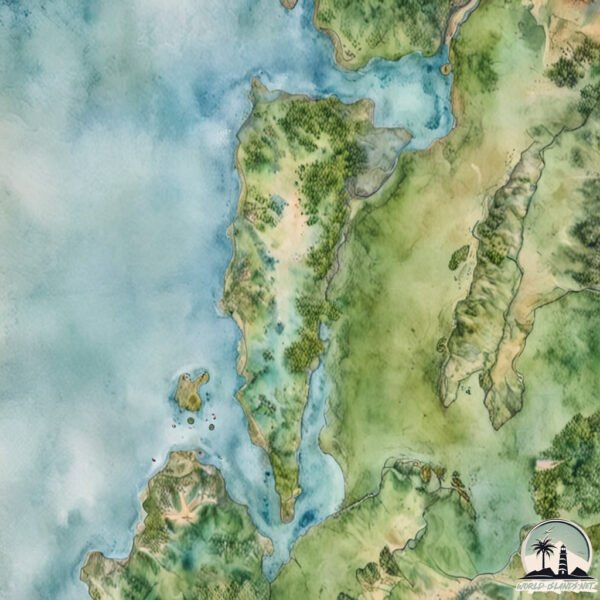Spike Island

Welcome to Spike Island, a Tropical island in the Andaman or Burma Sea, part of the majestic Indian Ocean. This guide offers a comprehensive overview of what makes Spike Island unique – from its geography and climate to its population, infrastructure, and beyond. Dive into the details:
- Geography and Size: Explore the island’s size and location.
- Climate and Weather: Weather patterns and temperature.
- Topography and Nature: Uncover the natural wonders of the island.
- Infrastructure and Travelling: Insights on reaching, staying, and making the most of your visit.
- News and Headlines: Latest News.
Geography and size of Spike Island
Size: 10.2 km²
Coastline: 21.4 km
Ocean: Indian Ocean
Sea: Andaman or Burma Sea
Continent: Seven seas (open ocean)
Spike Island is a Medium Island spanning 10 km² with a coastline of 21 km.
Archipel: Andaman Islands – Situated in the Bay of Bengal, the Andaman Islands are part of the Indian territory and are known for their picturesque beaches, clear waters, and lush forests. These islands are home to a variety of indigenous tribes and have a rich biodiversity, including unique flora and fauna. The Andamans also have a significant history, notably during the British colonial period.
Tectonic Plate: Burma – Also known as the Burma Plate, it’s a minor tectonic plate in Southeast Asia, largely covering Burma (Myanmar) and parts of the Indian Ocean. It’s involved in the subduction process under the Eurasian Plate, contributing to seismic activity in the region.
The geographic heart of the island is pinpointed at these coordinates:
Latitude: 12.27189179 / Longitude: 92.71103617
Climate and weather of Spike Island
Climate Zone: Tropical
Climate Details: Tropical Monsoon Climate
Temperature: Hot
Climate Characteristics: Characterized by heavy rainfall, high humidity, and uniformly high temperatures, but with a distinct short dry season. It features a seasonal reversal of prevailing wind directions.
Topography and nature of Spike Island
Timezone: UTC+05:30
Timezone places:
Max. Elevation: 69 m
Mean Elevation: 38 m
Vegetation: Evergreen Broadleaf Forest
Tree Coverage: 81%
The mean elevation is 38 m. The highest elevation on the island reaches approximately 69 meters above sea level. The island is characterized by Plains: Flat, low-lying lands characterized by a maximum elevation of up to 200 meters. On islands, plains are typically coastal lowlands or central flat areas.
Dominating Vegetation: Evergreen Broadleaf Forest
Characterized by dense, lush canopies of broadleaf trees that retain their leaves year-round. These forests are typically found in tropical and subtropical regions and are known for their high biodiversity. Spike Island has a tree cover of 81 %.
Vegetation: 6 vegetation zones – Very Highly Diverse Island
Islands in this range are ecological powerhouses, showcasing a wide array of vegetation zones. Each zone, from lush rainforests to arid scrublands, coastal mangroves to mountainous regions, contributes to a complex and interdependent ecosystem. These islands are often hotspots of biodiversity, supporting numerous species and intricate ecological processes.
Infrastructure and Travelling to Spike Island
Does the island have a public airport? no.
There is no public and scheduled airport on Spike Island. The nearest airport is Veer Savarkar International Airport / INS Utkrosh, located 66 km away.
Does the island have a major port? no.
There are no major ports on Spike Island. The closest major port is PORT BLAIR, approximately 61 km away.
The mean population of Spike Island is 26 per km². Spike Island is Gently Populated. The island belongs to India.
Continuing your journey, Baratang Island is the next notable island, situated merely km away.
Spike Island - Official Trailer [HD]
![Spike Island - Official Trailer [HD]](https://i.ytimg.com/vi/15pKXx9SHew/mqdefault.jpg)


India is classified as Emerging region: BRIC: Brazil, Russia, India, and China – Economies noted for their rapid growth and increasing influence on global affairs. The level of income is Lower middle income.
News – Latest Updates and Headlines from Spike Island
Stay informed with the most recent news and important headlines from Spike Island. Here’s a roundup of the latest developments.
Please note: The data used here has been primarily extracted from satellite readings. Deviations from exact values may occur, particularly regarding the height of elevations and population density. Land area and coastline measurements refer to average values at mean high tide.
